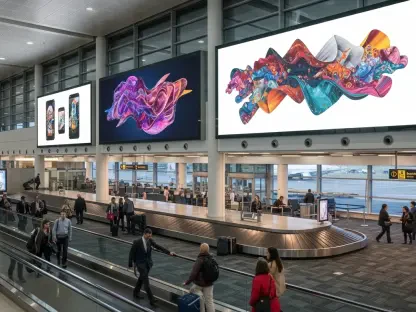The Rise of Food Vlogging in Kashmir’s Culinary Scene
In the heart of Kashmir’s bustling Srinagar, a vibrant café culture has emerged, driven by the power of social media and the captivating visuals of food vloggers showcasing everything from traditional wazwan to modern burgers. This digital wave has transformed the region’s dining landscape, turning small eateries into overnight sensations as influencers with thousands of followers post glossy reviews and mouthwatering videos. The food vlogging industry in Kashmir has become a cornerstone of the local culinary scene, amplifying the visibility of restaurants and shaping consumer preferences in a way traditional marketing never could.
The influence of these vloggers extends beyond mere promotion, as their content often dictates dining trends across the valley. Videos highlighting elaborate feasts or trendy fast-food joints resonate deeply with younger audiences, driving foot traffic to featured establishments. Platforms like Instagram and YouTube have become virtual menus, where a single post can make or break a restaurant’s reputation, underscoring the immense power these influencers wield in a region eager to embrace modern food culture.
This phenomenon has not only boosted the hospitality sector but also created a new breed of content creators who blend culinary passion with digital savvy. Their reviews often focus on aesthetics and taste, drawing crowds to hidden gems and popular spots alike. However, this rapid rise has come with unintended consequences, as the emphasis on visual appeal sometimes overshadows critical aspects like food safety, setting the stage for a deeper crisis in consumer trust.
The Rotten Meat Scandal Unraveled
Initial Revelations and Public Outcry
The underbelly of Kashmir’s food scene was exposed through a series of raids by the Food Safety Department in Srinagar and surrounding areas, confirming long-standing rumors of substandard meat practices. Inspectors uncovered alarming instances of spoiled or improperly stored meat in several popular eateries, revealing a systemic disregard for hygiene protocols. These findings sent shockwaves through the community, as diners who once trusted their favorite spots began questioning the safety of every meal.
Public reaction was swift and fierce, with social media platforms becoming battlegrounds for outrage against both restaurants and the vloggers who promoted them. Many consumers felt betrayed, accusing influencers of prioritizing paid endorsements over public health. The anger was palpable in viral posts and comments, with hashtags demanding accountability trending across the region, reflecting a profound erosion of trust in the dining ecosystem.
The scale of the scandal amplified public concern, as reports detailed how some establishments had been operating with expired or contaminated meat for extended periods. Families who frequented these venues expressed dismay, with many sharing personal stories of illness or discomfort they now linked to these revelations. This collective frustration underscored a growing demand for transparency in an industry that had thrived on image rather than integrity.
Role of Vloggers in the Crisis
Food vloggers, once celebrated as cultural ambassadors of Kashmir’s cuisine, found themselves at the center of the controversy for their role in endorsing unsafe establishments. Many had showcased restaurants with polished videos, often highlighting misleading certifications or pristine-looking kitchens that masked underlying issues. This focus on aesthetics over due diligence contributed significantly to a crisis of trust, as followers felt misled by influencers they had relied upon for honest recommendations.
Specific incidents further fueled the backlash, such as a prominent vlogger who praised a café’s meat storage practices only for it to be later raided and fined for violations. Social media criticism erupted, with users accusing influencers of complicity in promoting hazardous dining options, leading some vloggers to face intense scrutiny and even delete their profiles under pressure. These cases highlighted a glaring gap between the curated content shared online and the reality of food safety standards.
The fallout revealed a deeper issue of accountability, as many vloggers admitted to lacking the expertise or resources to verify safety protocols before posting endorsements. While some issued apologies or attempted to clarify their intent, the damage was already done, with public sentiment turning sharply against those perceived as prioritizing profit over responsibility. This episode served as a stark reminder of the influence these digital voices hold and the consequences of wielding it without caution.
Challenges in Food Safety and Accountability
Kashmir’s food industry faces systemic hurdles that exacerbate crises like the rotten meat scandal, including inadequate inspections and limited regulatory oversight. The Food Safety Department, often understaffed and underfunded, struggles to monitor the growing number of eateries across the valley, allowing violations to slip through the cracks. This gap in enforcement creates an environment where unsafe practices can persist undetected until a major incident brings them to light.
Compounding the issue is the lack of guidelines governing influencer endorsements in the food sector, leaving vloggers without clear standards to follow. Many face ethical dilemmas when offered paid promotions or complimentary meals, often accepting them without conducting thorough checks on hygiene or sourcing practices. This dynamic blurs the line between authentic content and sponsored posts, undermining credibility when scandals emerge and leaving influencers vulnerable to criticism.
For vloggers, verifying safety standards presents a significant challenge, as they typically lack training in food safety protocols and rely on surface-level observations. The pressure to maintain a positive online presence can also deter them from raising concerns about promoted establishments, even when doubts arise. Addressing these challenges requires a concerted effort to balance the benefits of digital promotion with the imperative of protecting public health through better education and oversight.
Regulatory Response and Industry Impact
In response to the meat safety scandal, authorities launched a series of surprise inspections across Kashmir, targeting restaurants and suppliers implicated in the violations. Several establishments faced temporary closures and hefty fines, with the Food Safety Department pledging to enforce stricter compliance moving forward. These measures aimed to restore confidence, though their effectiveness remains under scrutiny as consumers demand more consistent and transparent enforcement.
The broader impact on the food industry has been profound, with a noticeable decline in trust affecting not just restaurants but also related sectors like butcheries. Sales of meat have dropped significantly, as wary customers turn away from dining out in favor of home-cooked meals. This shift reflects a growing skepticism toward commercial food sources, with many opting for locally sourced or personally verified ingredients to avoid potential risks.
Restaurants, in turn, have scrambled to mitigate damage by publicizing efforts to improve hygiene, such as sharing videos of clean kitchens or displaying updated certifications. However, these actions have met with mixed reactions, as public faith remains shaken by the scale of the initial revelations. The industry now faces the daunting task of rebuilding credibility in an environment where every misstep is magnified by social media and consumer vigilance.
Future of Food Vlogging and Safety in Kashmir
Looking ahead, the meat safety crisis is likely to cast a long shadow over Kashmir’s food vlogging community and the broader dining scene, with heightened public scrutiny reshaping how influencers operate. The diminished credibility of vloggers may lead to a decline in their influence unless they adapt by prioritizing transparency and accountability in their content. This shift could redefine the role of digital creators in the region’s culinary narrative over the next few years.
Potential solutions to prevent future crises include implementing stricter regulations for influencer endorsements, ensuring that promotions are backed by verified safety standards. Training programs for vloggers on food safety basics could also equip them to make informed assessments before lending their platforms to businesses. Additionally, educating consumers on how to evaluate food quality and recognize red flags empowers them to make safer dining choices independently.
Collaboration between stakeholders—regulators, influencers, and restaurateurs—will be crucial to forging a path forward. Establishing clear guidelines for content creation and promotion, coupled with robust inspection mechanisms, could help align the rapid growth of Kashmir’s food culture with essential safety priorities. The coming years, especially from now through 2027, will test whether these efforts can restore balance to an industry rocked by scandal and skepticism.
Conclusion: Rebuilding Trust in Kashmir’s Food Culture
Reflecting on the tumultuous events surrounding the meat safety crisis in Kashmir, it became evident that systemic flaws and unchecked influencer power had combined to jeopardize public health. The scandal laid bare the vulnerabilities in a food ecosystem driven by social media allure, where trust was eroded by revelations of unsafe practices in celebrated eateries. Each stakeholder, from vloggers to regulators, faced intense scrutiny as the region grappled with the fallout of diminished confidence.
Moving beyond the immediate aftermath, actionable steps emerged as vital for recovery, including the enforcement of rigorous safety standards and the development of ethical guidelines for digital endorsements. A renewed focus on transparency, such as public access to inspection reports and influencer disclosures, offered a way to mend fractured trust. These measures, if implemented with diligence, promised to safeguard the future of Kashmir’s culinary scene against similar crises.
Ultimately, the path to restoration hinged on a collective commitment to prioritize health over hype, ensuring that the region’s rich food heritage was not overshadowed by preventable scandals. By fostering a culture of accountability and empowering consumers with knowledge, Kashmir’s dining landscape could evolve into one defined by integrity. This crisis served as a pivotal lesson, urging all involved to champion safety as the cornerstone of culinary innovation and digital influence.









